My wife and I recently visited Vienna, marking my first trip to this remarkable city. I was captivated by its breathtaking beauty and impressed by how seamlessly music, art, and history are woven into every corner of the city. We visited amazing museums with beautiful art, furniture, and decorative objects spanning centuries. Here are some of the hilights as well as some restaurant suggestions and a hotel recommendation.
Belvedere Palace
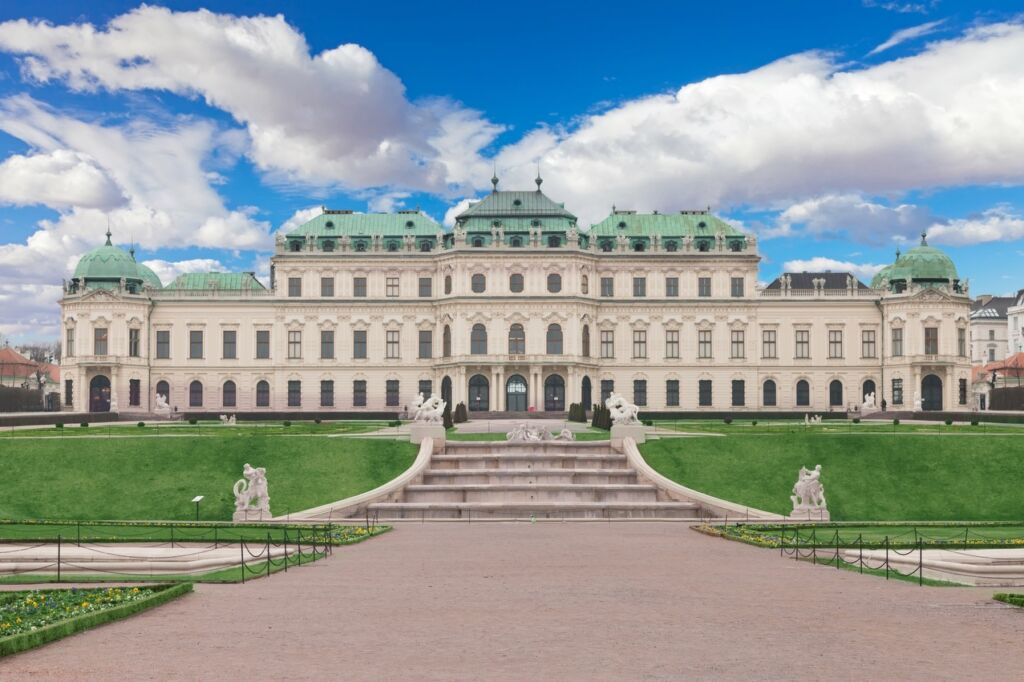
The Belvedere Palace in Vienna is a stunning Baroque landmark and a must-see for visitors. Built in the 18th century as Prince Eugene of Savoy’s summer home, it features two grand buildings—Upper and Lower Belvedere—connected by beautiful gardens. Today, it’s a top art museum, showcasing works from the Middle Ages to modern times. The Upper Belvedere is especially famous for its collection of Austrian art, including pieces by Gustav Klimt, Egon Schiele, and Oskar Kokoschka.
One of the biggest draws at the Belvedere is Gustav Klimt’s The Kiss, a dazzling masterpiece from his “Golden Period.” Created between 1907 and 1908, the painting features a couple wrapped in an intimate embrace, surrounded by shimmering gold and intricate patterns. It’s a powerful symbol of love and connection, and its striking design has made it one of the most beloved artworks in the world. Seeing it in the elegant Upper Belvedere setting adds to the magic of the experience.
Be sure to buy tickets in advance or arrive early and have a meal at the on-site restaurant Schlosscafé as there is often a wait. They serve a good schnitzel but it was crowded and loud.
Hofburg Imperial Palace
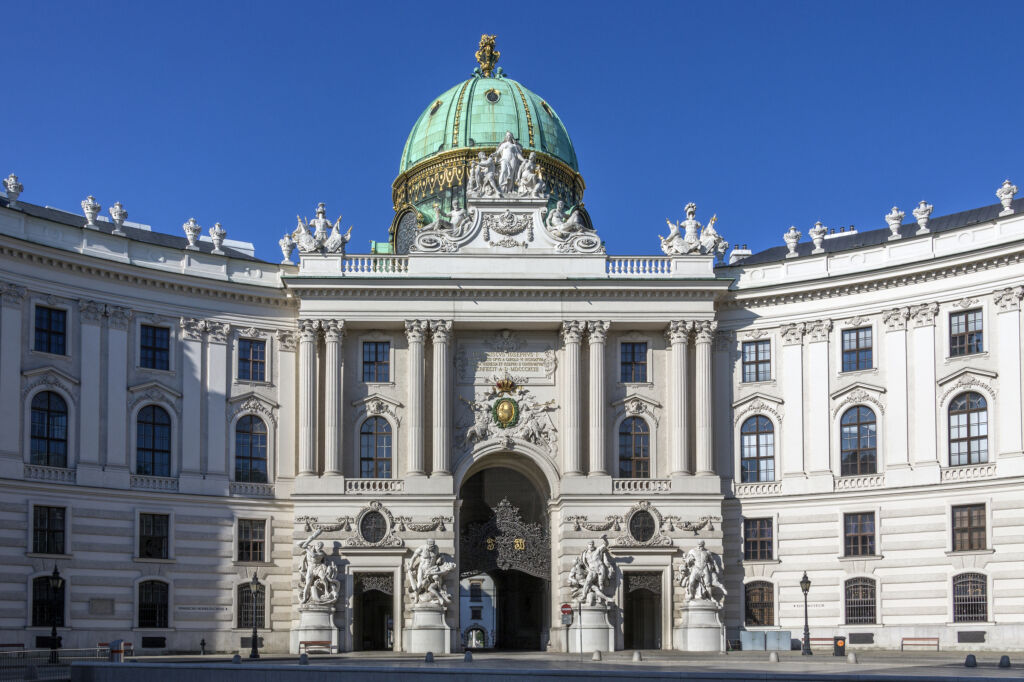
The Hofburg Imperial Palace in Vienna is a magnificent architectural complex that served as the political and cultural heart of the Habsburg Empire for more than six centuries. Located in the heart of Vienna, this sprawling palace is a stunning mix of Gothic, Baroque, Rococo, and Neoclassical styles, reflecting its long history of expansion and renovation. Once the winter residence of the Habsburg dynasty, the Hofburg is now the official residence and workplace of the Austrian president. Visitors can explore its rich history through its many museums and attractions, which offer a glimpse into imperial life, including the opulent apartments of Empress Elisabeth (“Sisi”) and Emperor Franz Joseph, as well as an impressive collection of royal artifacts.
Key attractions within the Hofburg complex include the Sisi Museum, which showcases the life and legend of Empress Elisabeth; the Imperial Treasury, home to crown jewels and regalia of the Holy Roman Empire; and the Austrian National Library, a breathtaking Baroque masterpiece with grand frescoed ceilings. Don’t miss the Spanish Riding School, where the world-famous Lipizzaner horses perform elegant equestrian displays, and the Albertina Museum, known for its extensive art collection. With its grand courtyards, museums, and architectural splendor, the Hofburg is a must-see for history enthusiasts, art lovers, and anyone wanting to experience the grandeur of imperial Austria.
Schönbrunn Palace
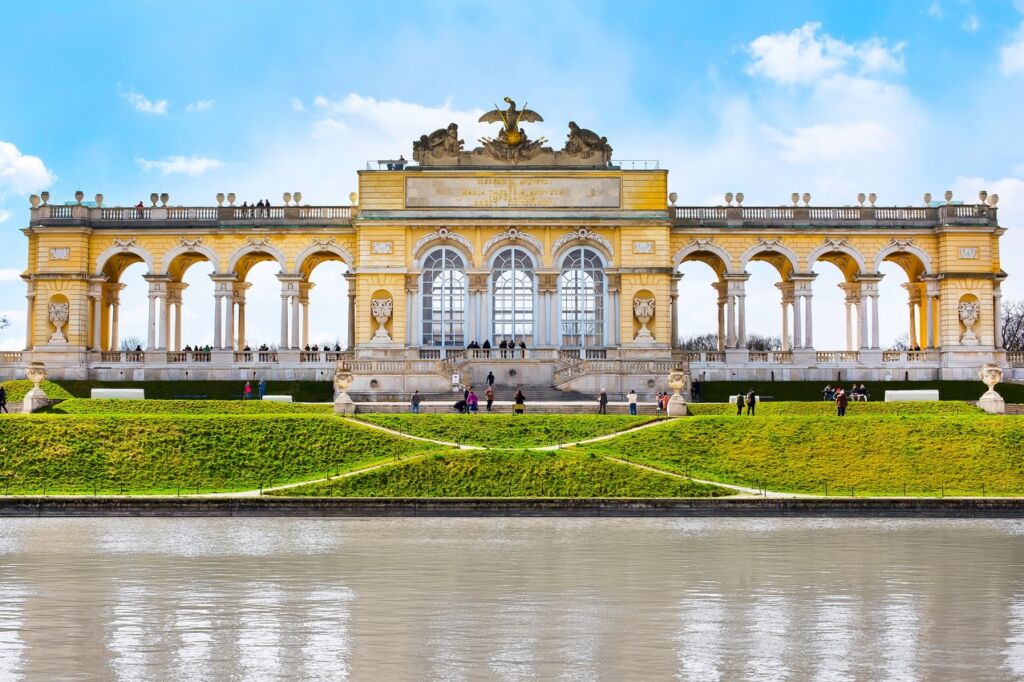
Schönbrunn Palace is a treasure trove of imperial grandeur and a vivid window into the lives of the Habsburgs, one of Europe’s most powerful dynasties. Built in the 17th century and transformed into a summer residence by Empress Maria Theresa in the 18th century, the palace was not just a home—it was a stage for power, diplomacy, and opulence. The grand halls and richly decorated rooms reflect the Habsburgs’ love for art, music, and extravagance. Imagine Empress Elisabeth (Sisi) wandering through the palace, trying to escape the rigid formalities of court life, or Emperor Franz Joseph working tirelessly at his simple desk, even in the midst of such splendor. Schönbrunn’s walls hold stories of lavish balls, political intrigue, and the daily lives of a family that ruled an empire.
Step outside, and the gardens tell their own tale of ambition and leisure. Modeled after the grand gardens of Versailles, they were designed to impress visiting dignitaries and entertain the elite. But they also reveal the Habsburgs’ personal joys: children playing in the hedge maze, the royal family strolling through the vibrant flower beds, and guests marveling at the stunning Neptune Fountain. The Gloriette atop the hill was a favorite spot for imperial breakfasts and symbolized their belief in the glory of the monarchy. Even the world’s oldest zoo on the grounds wasn’t just for show—it reflects the Habsburgs’ curiosity and fascination with the natural world. Visiting Schönbrunn is like stepping back into a time when Vienna was the beating heart of an empire and life was lived on a grand, theatrical scale.
Vienna Music Hall
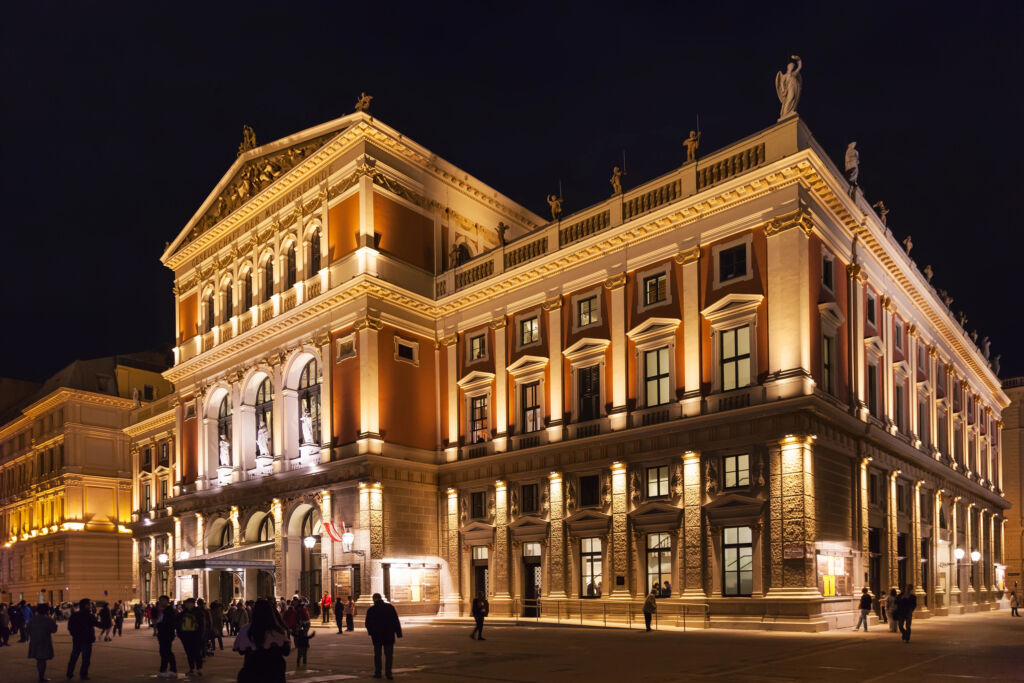
The Vienna Musikverein, often referred to as the Vienna Music Society, is one of the world’s most prestigious concert halls and a cornerstone of Vienna’s rich musical heritage. Located in the heart of Vienna, this grand building has been home to the Vienna Philharmonic Orchestra since its opening in 1870. Designed by Theophil Hansen in a Neoclassical style, the Musikverein is renowned for its “Golden Hall” (Goldener Saal), considered one of the finest concert venues globally due to its exceptional acoustics and stunning gilded interior. This hall is the centerpiece of Vienna’s classical music scene and hosts the world-famous Vienna New Year’s Concert, broadcast to millions worldwide each year.
The Musikverein is not only an architectural marvel but also a hub for world-class music. Its program includes performances by leading orchestras, soloists, and conductors, covering a range of classical repertoire from Baroque to contemporary works. The venue also features smaller halls, such as the Brahms Hall, ideal for chamber music and intimate performances. Visitors to Vienna often make the Musikverein a priority, whether to attend a concert or simply to admire the exquisite beauty of its halls, making it a must-see for music enthusiasts and culture seekers alike.
St Stephen’s Cathedral
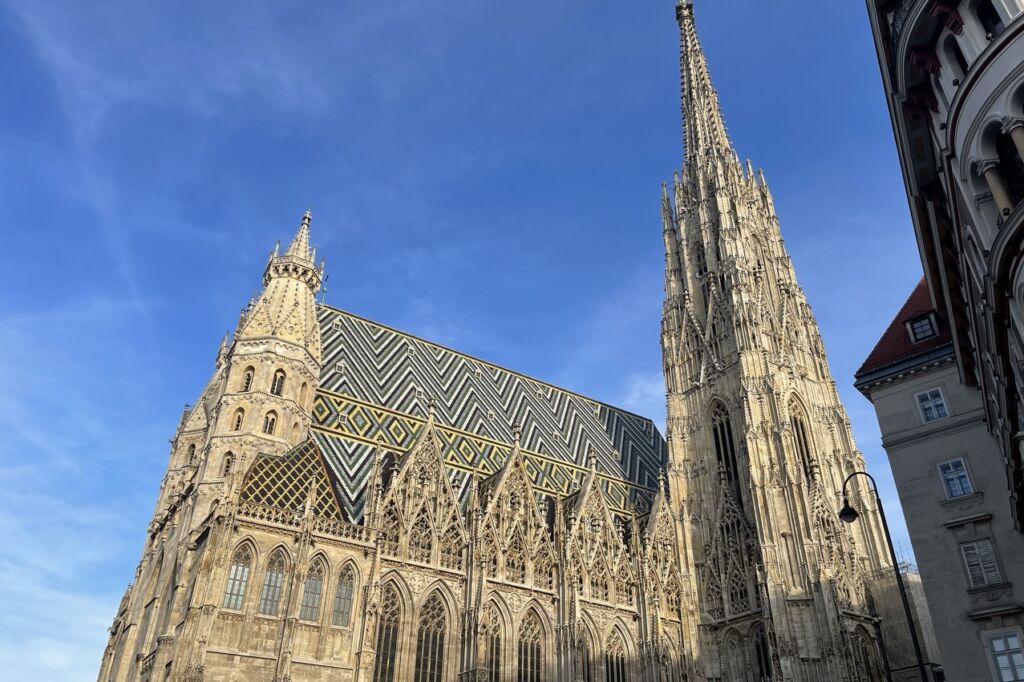
If there’s one place in Vienna that will make your jaw drop, it’s St. Stephen’s Cathedral—or as the locals call it, Stephansdom. This Gothic masterpiece is the heart and soul of the city, standing tall with its colorful tiled roof and towering spire that dominates Vienna’s skyline. It’s like a time machine to the Middle Ages, but with way more wow-factor. Whether you’re into history, architecture, or just want that perfect selfie, this place has something for everyone.
Here’s why you can’t miss it: Climb the 343 steps to the top of the South Tower (yeah, your legs will burn, but the view of Vienna is so worth it). Or, take a peek down below in the catacombs, where centuries-old mysteries and spooky vibes await. The interior is just as impressive as the outside, with intricate stonework, jaw-dropping altars, and a pipe organ that’s basically the rock star of church music. And don’t forget—this is where Mozart got married! Visiting St. Stephen’s is like stepping into a living postcard of Vienna, and trust me, you’ll walk away feeling like you’ve just touched a piece of history.
Leopold Museum
The Leopold Museum, located in Vienna’s MuseumsQuartier, is a renowned cultural institution dedicated to modern Austrian art, with a particular focus on the works of Egon Schiele and Gustav Klimt. Established in 2001, it houses the extensive private collection of Rudolf and Elisabeth Leopold, who spent decades amassing over 5,000 pieces of art.
I was impressed by Klimt’s painting “Death and life” which captures the cycle of life from birth to young love to motherhood, old age and finally death as depicted by a scary skeleton grim reaper caricature. I also loved the large collection of contemporary furnishings and decorative arts from the early 20th century.
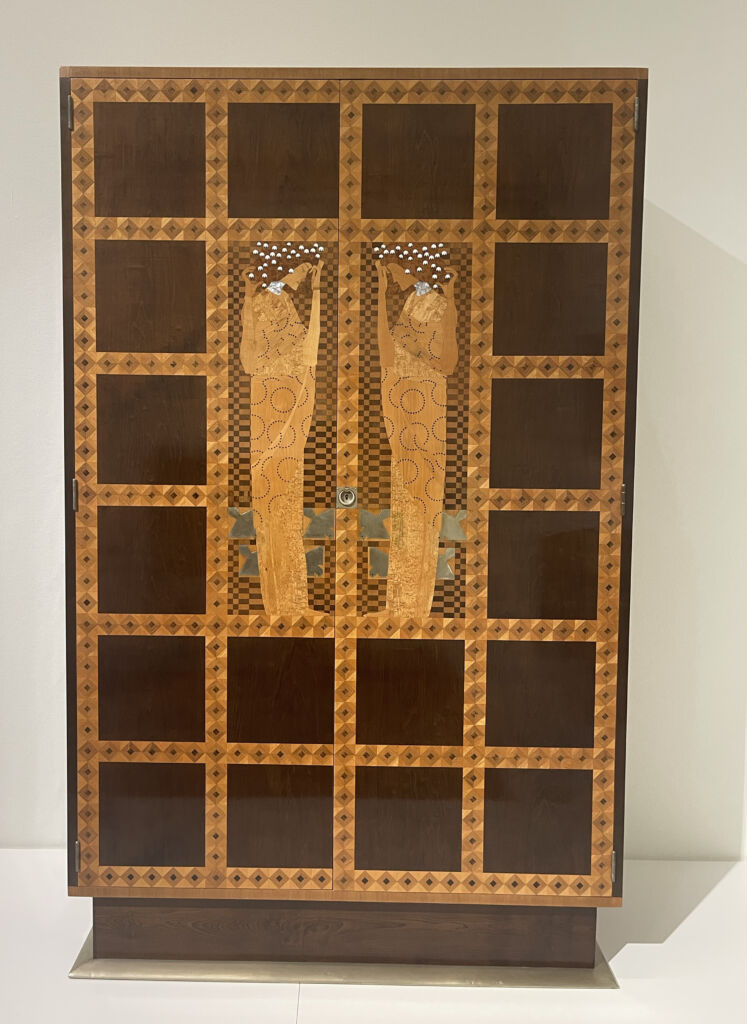
Albertina Museum
The Albertina Museum in Vienna is a cultural gem, renowned for its impressive art collection and stunning architecture. Housed in a former Habsburg palace, the museum seamlessly blends imperial history with modern art. Its extensive collection includes over a million prints and 60,000 drawings, featuring works by masters like Albrecht Dürer, whose famous Young Hare and Praying Hands are standout pieces. The museum also boasts iconic paintings by Monet, Picasso, and Klimt, alongside a significant selection of modern and contemporary art. The Albertina’s mix of classic and modern works makes it a must-visit destination for art lovers exploring Vienna.
When I was there they had a special exhibit of an American artist Robert Longhorn. I have been to one to many of these special exhibits and been disappointed, but this was amazing. Robert Longhorn draws these giant pictures using charcoal, pencil, and pen. They look photo realistic. And cover intriguing themes from the plight of refugees pictured in a precarious raft in the triptych below, to guns and the military. There was a close up of a woman with stunning eyes wearing a burqa and the outside of a nazi office building.
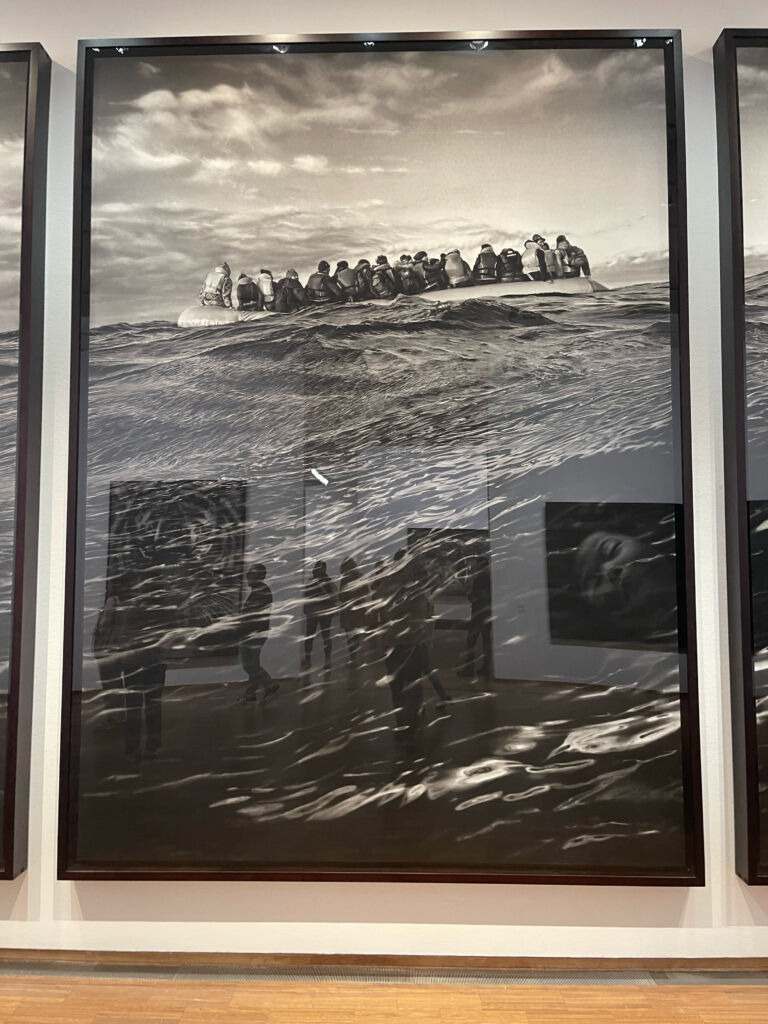
Restaurants
Dining in Vienna is an experience that effortlessly blends elegance with global flair. From traditional Austrian fare to inventive international cuisine, the city’s culinary scene is as rich and varied as its cultural offerings.
Albert Restaurant & Bar
Josefstadt: Albertgasse 39 – 1080 Wien
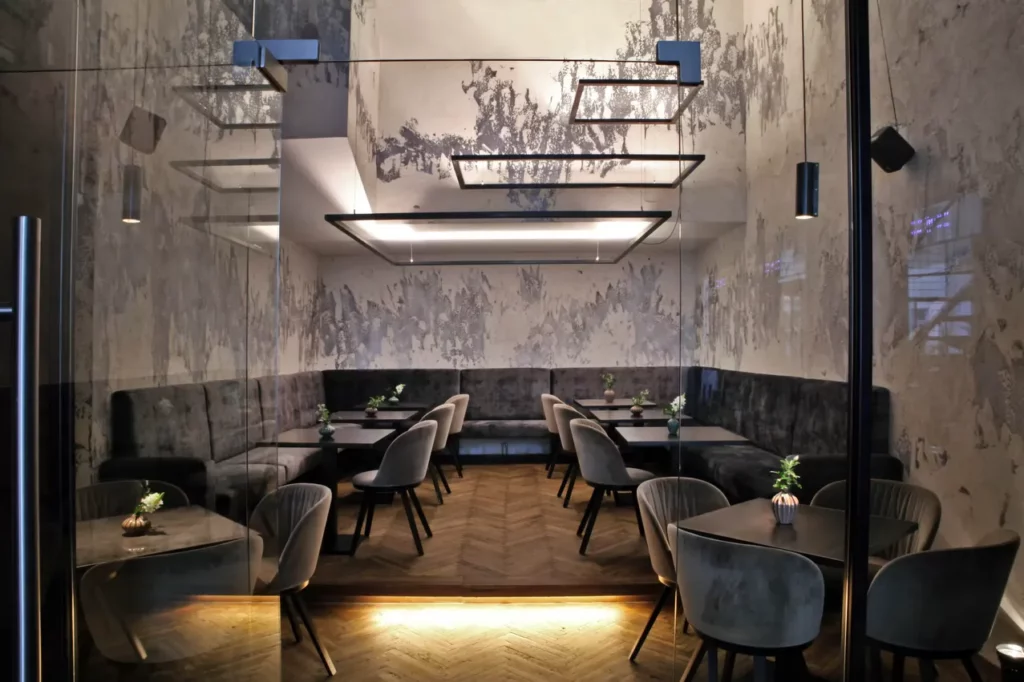
Albert Bar & Restaurant—a chic, contemporary venue that strikes the perfect balance between upscale dining and relaxed atmosphere. With creative dishes, great drinks, and warm ambiance, it’s the kind of place you remember long after the last bite. It has dishes from Asian Sashimi and Tempura, French to Austrian Weinerschnitzel. The owner was gracious and fun to talk with, he spoke perfect English. It was so good we had to go back a second time on our short trip!
For Spanish tapas check out El Chipirón, a stylish spot where the bar is split into two cozy sections—one facing the cocktail action, the other peeking into the kitchen. The Jamon Ibérico was a standout, perfectly paired with a glass of wine and the hum of lively conversation.
Accomodations
Hotel Josefshof am Rathaus
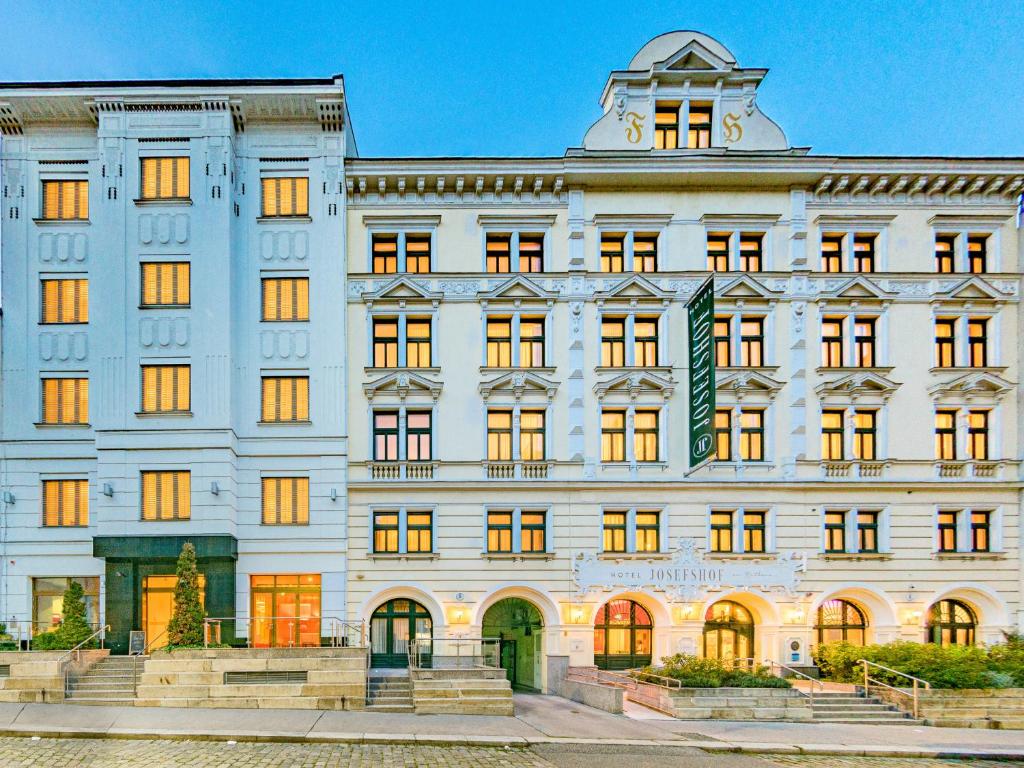
Josefsgasse 4-6, 08. Josefstadt, 1080
Josefshof am Rathaus is located in a quiet side street in the charming Josefstadt district, just a few steps away from famous sights like Vienna City Hall, the Museums Quarter and the Mariahilferstraße Shopping street. The staff was freindly and helfpful. They have a small hotel bar just off the lobby and under ground parking for an extra fee. We stayed in the modern wing with a nice step in shower and cool Klimt glass decorations.